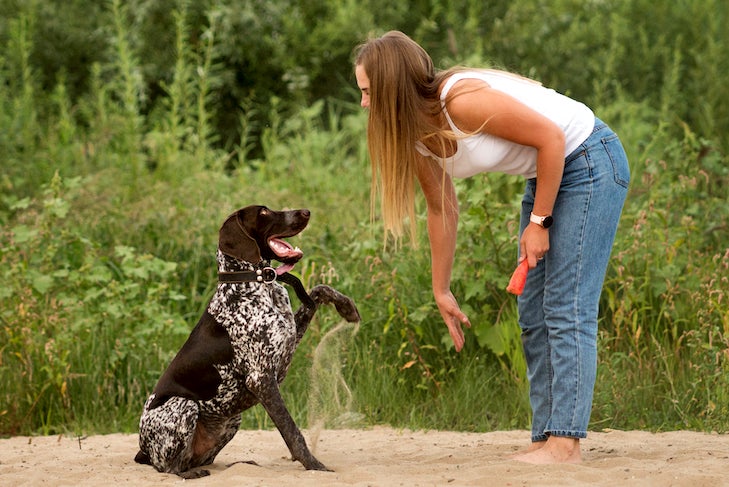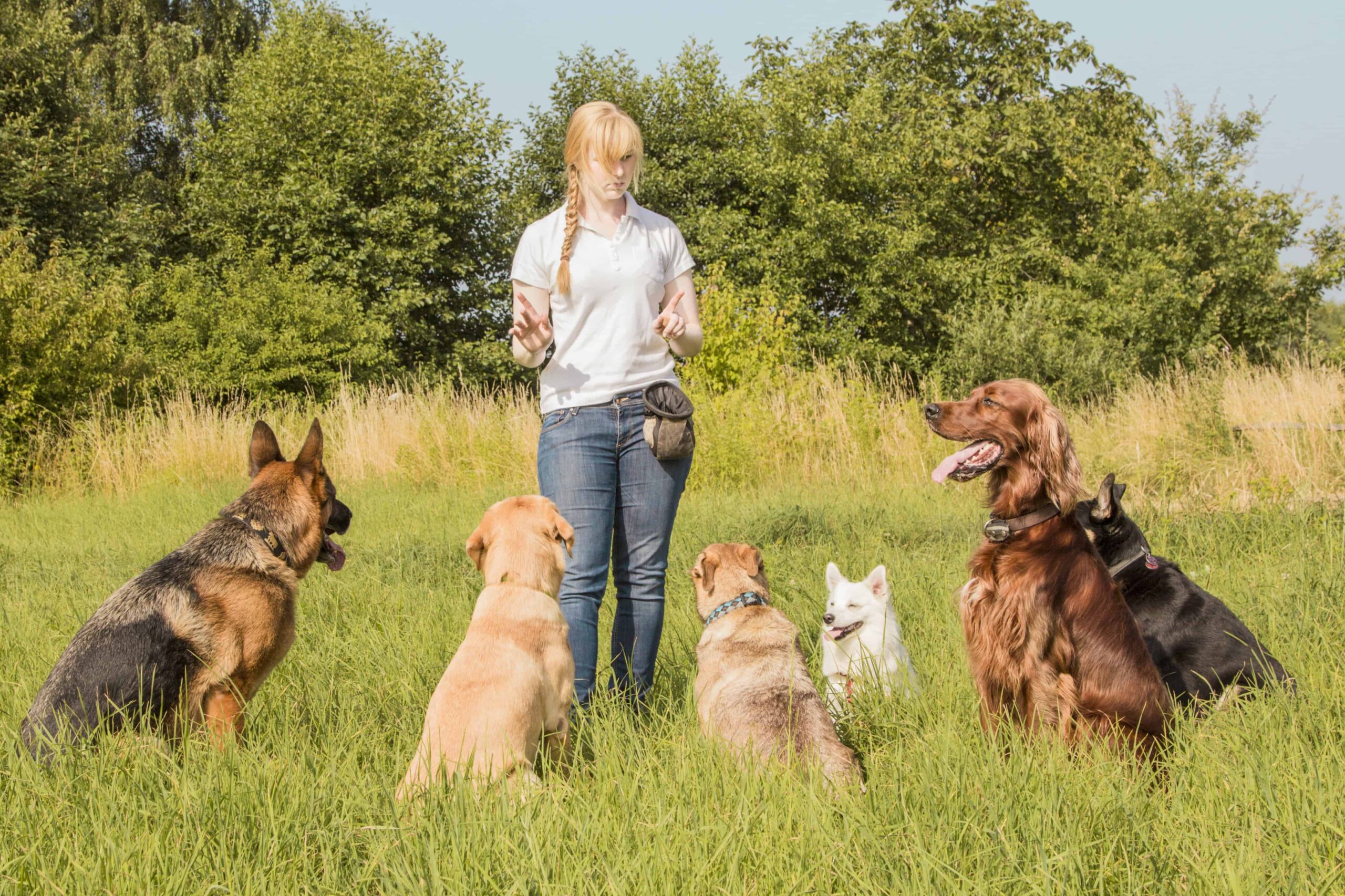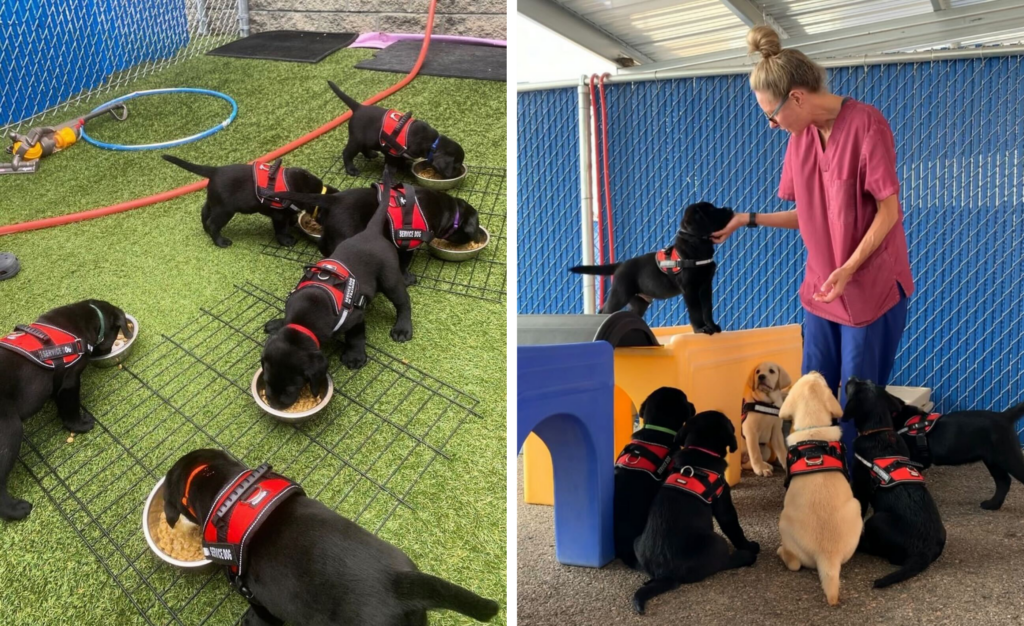The Role of Socialization in Dog Training for Better Behavior
The Role of Socialization in Dog Training for Better Behavior
Blog Article
Top Canine Training Strategies Every Proprietor Should Know

Positive Reinforcement Strategies
Making use of favorable support techniques is essential for efficient dog training, as it fosters a trusting bond in between the instructor and the dog. This technique focuses on satisfying desirable habits instead than penalizing unfavorable ones, creating a setting conducive to discovering. Benefits can include treats, appreciation, or playtime, which motivate pet dogs to repeat the actions that make them these incentives.

Additionally, this approach enhances the dog's interest for training sessions. When pet dogs connect training with favorable experiences, they are more involved and responsive. Past immediate behavior adjustment, positive support encourages a collective connection in between the dog and trainer, reducing anxiety and anxiety
To optimize performance, it is crucial to deliver incentives promptly, guaranteeing the canine links the habits with the support. Fundamentally, favorable support strategies not only produce better-trained pet dogs however likewise promote an unified collaboration in between dog and owner.
Clicker Training Approach
The clicker training method is a very reliable technique that builds upon the principles of positive support by including a distinct sound to mark wanted actions. This method utilizes a little handheld gadget that generates a clicking sound, enabling trainers to communicate with their canines in a clear and prompt way. When a pet dog executes a habits that the proprietor desires to encourage, the remote control is turned on, complied with by a benefit, generally in the form of treats or appreciation.
The secret to successful remote control training exists in uniformity and timing. It is essential to click at the exact moment the preferred habits occurs, guaranteeing that the dog associates the sound with the activity and the subsequent incentive. This method not only enhances interaction yet likewise fosters a stronger bond in between the dog and the owner, as it urges engagement and interaction during training sessions.
Clicker training can be related to a selection of habits and commands, from standard obedience to much more complicated tricks. Its flexibility and efficiency make it a popular method amongst specialist fitness instructors and family pet proprietors alike, leading the way for a receptive and well-trained canine buddy.
Leash Training Basics
Efficient leash training is essential for guaranteeing a secure and enjoyable walking experience for both canines and their proprietors. Dog training. Leash training should begin very early and be approached with perseverance and consistency. Begin by choosing an ideal leash and collar or harness. A flat collar may help some canines, while others might gain from a harness that decreases drawing.
Present your pet to the leash progressively, enabling them to explore it in a comfortable environment. Method loose-leash walking once they are accustomed. This involves fulfilling your pet for strolling next to you instead than drawing ahead. Use treats and praise to strengthen wanted habits, and make certain to continue to be assertive and calm.
If your dog begins to pull, stop walking right away. Wait up until they go back to your side before resuming. This educates them that drawing does not result in progress. Furthermore, technique different strolling settings to assist your pet adjust to distractions.
Routine method will strengthen your canine's understanding of chain etiquette. Bear in mind that chain training is a recurring process; perseverance and consistency will yield the most effective results, cultivating a favorable experience for both you and your canine friend.
Socialization Methods
Socializing is a crucial aspect of dog training that ought to ideally begin during puppyhood yet can be advantageous at any kind of age. Efficient socializing assists canines establish self-confidence and reduces the likelihood of behavior concerns. To apply successful socialization methods, subject your pet dog to a selection of environments, people, and other animals.
Beginning with controlled setups, such as pup courses or arranged playgroups, where young canines can communicate securely. Progressively present your pet to new experiences, including various noises, surface areas, and tasks. Make certain these encounters are positive and rewarding to establish a complacency.
For adult pets or those doing not have direct exposure, begin with low-stress circumstances. Short, favorable communications with calm pet dogs and pleasant human beings can develop positive organizations. Use deals with and appreciation to enhance desirable habits throughout these experiences.

Consistency and Persistence
Recognizing the significance of consistency and persistence in canine training is necessary for attaining long lasting results. Irregular training can lead to confusion, making it hard for the pet dog to grasp commands or habits, eventually impeding progression.
In addition, persistence is a vital component of efficient training. Canines, like human beings, discover at their own speed. Some might realize concepts rapidly, while others could take longer. It is vital for owners to stay tranquil and encouraging, enhancing positive actions without considering disappointment or penalty. This promotes a trusting partnership between Resources the pet dog and proprietor, motivating a more prepared and enthusiastic student.
To cultivate uniformity and persistence, establish a routine training regular, utilize the same commands, and make certain that all member of the family apply the same training principles - Dog training. By doing so, you create a secure atmosphere for finding out, enabling your canine to thrive and establish right into a well-behaved buddy
Verdict
To conclude, effective dog training strategies, such as favorable support, clicker training, and appropriate leash training, are essential for cultivating a healthy owner-dog connection. Furthermore, executing socializing strategies and maintaining uniformity and persistence throughout the training process contributes dramatically to a canine's overall wellness. By integrating these methods, pet dog owners can assist in the growth of well-adjusted, obedient pet dogs, ultimately boosting the high quality of life for both the proprietor and the dog.
Among the most famous methods are favorable reinforcement, clicker training, and leash training, each offering one-of-a-kind advantages that add to a well-behaved pet dog. As we explore these fundamental techniques, it becomes apparent that mastering their subtleties can dramatically affect the training experience and the pet's general behavior.Utilizing positive reinforcement techniques is necessary for reliable dog training, as it cultivates a trusting bond in between the pet and the trainer.In final thought, efficient pet training strategies, such as favorable support, remote control training, and correct chain training, are vital for fostering a healthy and balanced owner-dog partnership. By integrating these techniques, dog owners can help with the development of well-adjusted, loyal pet dogs, ultimately enhancing the top Source quality of life for both the owner and the pet dog.
Report this page